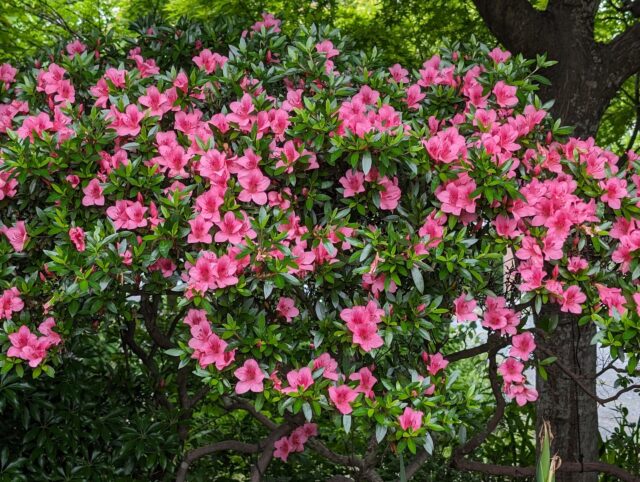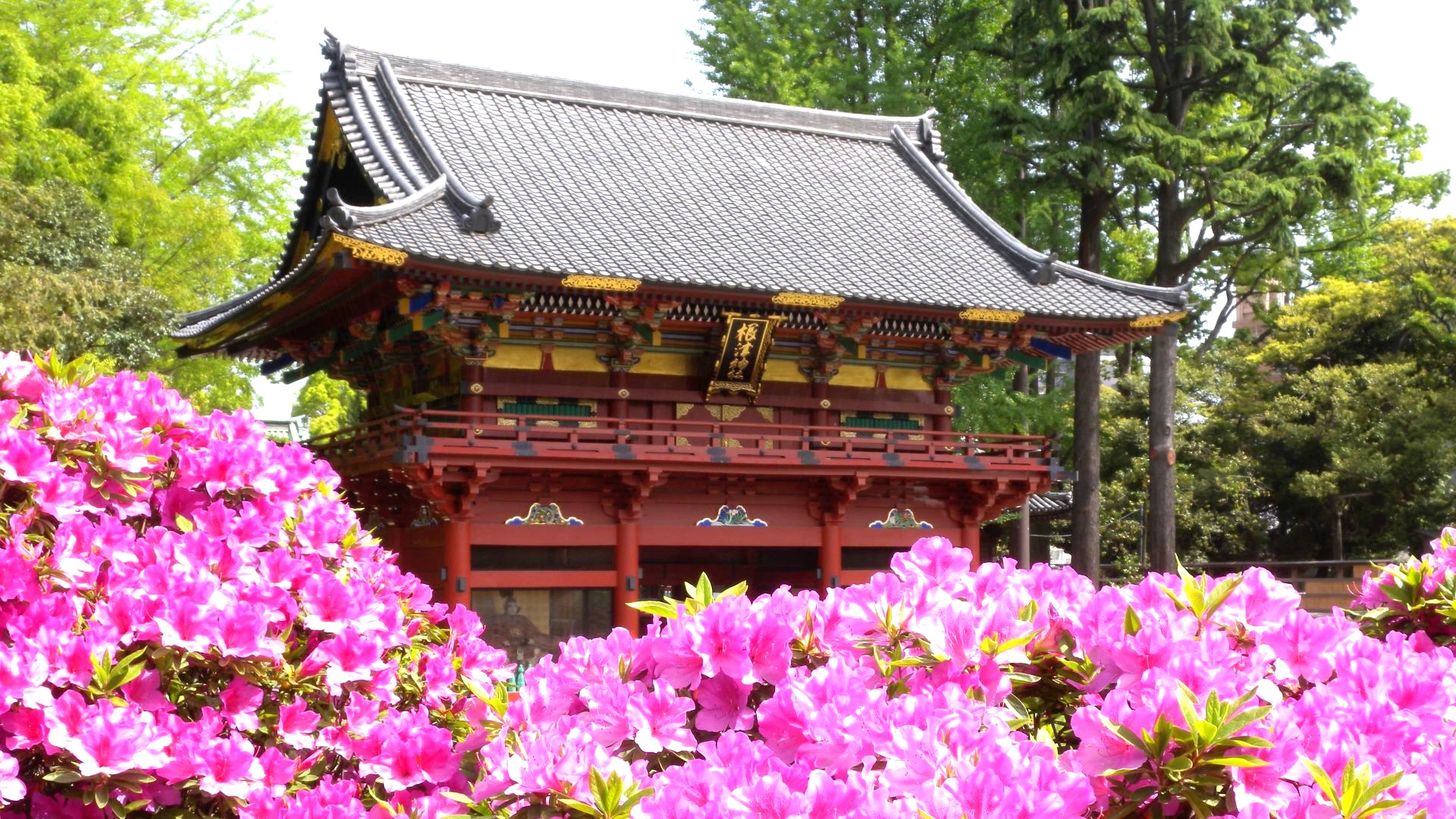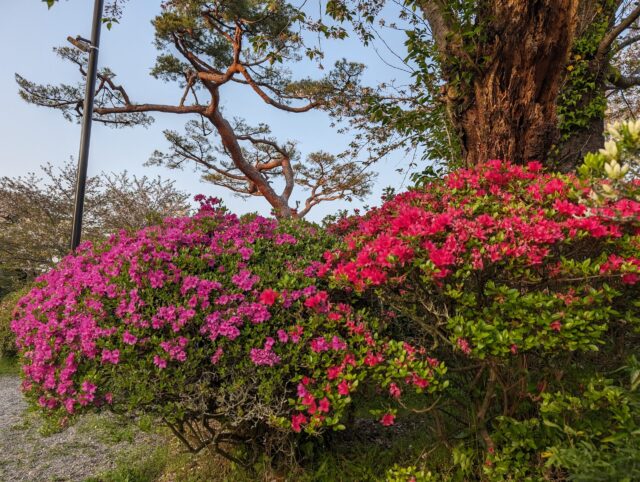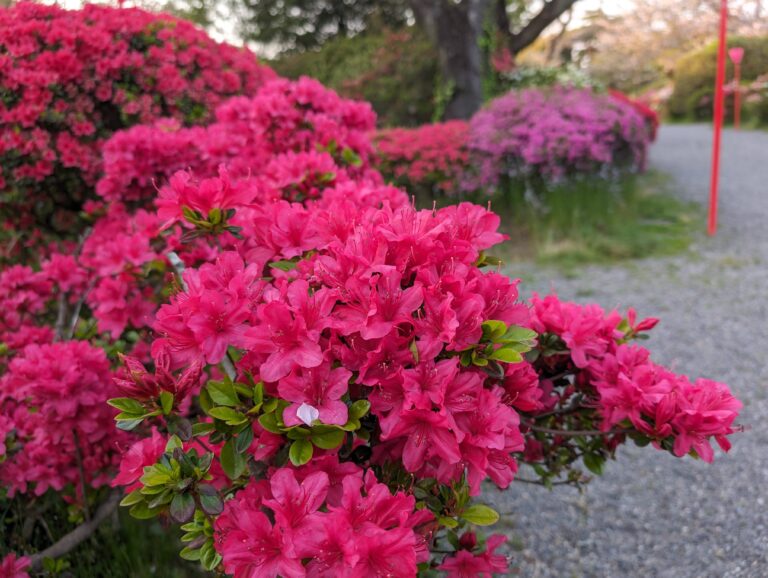When spring unfolds across Japan, a spectacular display of color emerges as azaleas burst into bloom throughout Japanese gardens, creating breathtaking landscapes that have captivated visitors for centuries. While cherry blossoms might steal the international spotlight, the azalea (known as tsutsuji in Japanese) holds a special place in Japan’s horticultural heritage and traditional garden design. These vibrant flowering shrubs transform ordinary spaces into extraordinary displays of color, form, and cultural expression.
From ancient temple grounds to meticulously designed formal gardens, azaleas create waves of crimson, pink, white, and purple that flow across the landscape like a living painting. What makes Japanese azalea gardens truly special is not just the variety and abundance of these flowering shrubs, but the thoughtful integration into traditional garden elements and the deep cultural significance they hold. This guide will take you through the fascinating world of Japanese azalea gardens, their history, distinctive features, and where to experience their splendor firsthand.
History and Cultural Significance of Japanese Azaleas

Azaleas have been cherished in Japan for well over a millennium, with references to these colorful shrubs appearing in the Man’yoshu – Japan’s oldest poetry anthology dating back to 759 CE. These early literary mentions demonstrate how deeply these plants have been woven into Japanese cultural consciousness.
The cultivation of azaleas reached its zenith during the Edo period (1603-1868), considered the golden age of Japanese horticulture. During this time, gardeners and nurserymen developed sophisticated breeding techniques, giving rise to thousands of cultivars with various colors, patterns, and flowering forms. The distinct beauty of native Japanese azalea species, particularly those originating from the southern island of Kyushu, provided the foundation for these breeding efforts.
What began as appreciation for wild mountain azaleas evolved into deliberate cultivation and artistic expression. Temple gardens incorporated azaleas both for their beauty and symbolic value – representing transient beauty and the changing seasons so central to Japanese aesthetic sensibilities. The practice of selective breeding using native species from Kyushu has resulted in over 2,000 varieties known today, each with unique characteristics and blooming patterns.
Tsutsuji and Satsuki: Japan’s Iconic Flowering Shrubs
Japanese gardeners broadly categorize azaleas into two main groups: tsutsuji and satsuki. Understanding the distinction helps appreciate the rhythm of azalea seasons in Japan and the different ways these plants are used in garden design.
Types and Characteristics
Tsutsuji azaleas are the first to bloom in the Japanese garden calendar, typically flowering from April to May. These varieties include:
- Kirishima azaleas (Rhododendron kiusianum): Native to the volcanic Kirishima mountains of Kagoshima, these compact shrubs produce abundant small flowers in vibrant shades from brick red to peach.
- Kurume azaleas (Rhododendron obtusum hybrids): Originating from Kurume City in Fukuoka Prefecture, these are perhaps the most famous Japanese azaleas internationally. They feature small, bright flowers in dense clusters.
- Hirado azaleas: Larger-flowered varieties developed on Hirado Island, often with bold color patterns.
Satsuki azaleas (Rhododendron indicum and hybrids) bloom later, from May to July, extending the flowering season. Their key characteristics include:
- Smaller, more delicate flowers than many tsutsuji varieties
- More varied flower forms (single, hose-in-hose, and double flowers)
- Remarkable color diversity, including striking patterns, stripes, and flecks
- Compact growth habit ideal for shaping and pruning
The botanical classification of Japanese azaleas can be complex, as many garden varieties are the result of centuries of hybridization and selection. All Japanese azaleas belong to the subgenus Tsutsusi within the genus Rhododendron.
| Feature | Tsutsuji Azaleas | Satsuki Azaleas |
|---|---|---|
| Bloom Time | April-May | May-July |
| Flower Size | Often larger | Generally smaller, more delicate |
| Growth Habit | Various, often medium-sized | Compact, slower-growing |
| Sun Tolerance | More sun-tolerant | Prefers partial shade |
| Use in Gardens | Mass plantings, karikomi | Focal points, container culture |
| Parent Species | Various (R. kiusianum, etc.) | Primarily R. indicum |
Differences in Blooming Seasons
The sequential blooming of different azalea types creates a continuous flower display from April through July in Japanese gardens. This extended blooming period allows garden designers to create spaces that remain visually interesting throughout late spring and early summer:
- Early April: First tsutsuji varieties begin blooming, coinciding with the end of cherry blossom season
- Mid to Late April: Peak bloom for most tsutsuji varieties
- May: Late-blooming tsutsuji and early satsuki varieties overlap
- Late May to July: Satsuki azaleas come into their full glory
This succession of blooms is deliberately incorporated into Japanese garden planning, creating a rhythm of color that guides visitors through the changing seasons.
The Role of Azaleas in Japanese Gardens

Unlike Western garden traditions that often use azaleas as accent plants or border elements, Japanese garden design integrates azaleas as structural components of the landscape. They become part of the garden’s fundamental vocabulary, helping define spaces and create visual rhythm.
Traditional Pruning Techniques: O-Karikomi and Tamamono
Japanese gardeners have developed distinctive pruning methods that transform azaleas into sculptural elements:
- O-Karikomi: Refers to groups of individually planted azaleas that are pruned to create a unified flowing form, often resembling rolling hills or clouds. This technique creates a sense of movement in the garden.
- Tamamono: Describes a group of azaleas clipped to form a single massive dome or mound. These carefully shaped forms provide year-round structure to the garden, becoming especially dramatic when covered in blossoms.
These techniques transform azaleas from mere flowering plants into architectural elements that define the garden’s form even when not in bloom. The evergreen foliage of most Japanese azaleas ensures they maintain visual interest throughout the year.
Landscape Design Applications
Within traditional Japanese garden aesthetics, azaleas serve multiple design functions:
- Creating visual layers: Planted in front of taller trees to establish depth and perspective
- Defining pathways: Shaped to guide movement through the garden
- Framing views: Carefully positioned to draw attention to focal points like stone lanterns or water features
- Suggesting landscape features: Pruned to evoke natural forms like mountains or clouds
- Color harmonization: Varieties selected to complement surrounding elements and seasonal changes
While flowers are generally less emphasized than form in Japanese garden design, azaleas provide a rare explosion of seasonal color that creates memorable contrast with the otherwise restrained palette of greens, grays, and browns.
Famous Azalea Garden Spots in Japan
Japan offers countless opportunities to experience the magic of azalea season. Here are some of the most spectacular locations organized by region:
Tokyo Area
Nezu Shrine This historic Shinto shrine in Bunkyo Ward hosts the famous Bunkyo Azalea Festival (Bunkyo Tsutsuji Matsuri) each April. The shrine’s hillside garden features over 3,000 azalea plants representing about 100 different varieties, creating a multicolored tapestry across the landscape.
Official website:https://www.nedujinja.or.jp/

Visitors on social media often capture the magical atmosphere: “Walking through the azalea tunnel at Nezu Shrine feels like entering another world. The colors are so intense they almost don’t seem real!” – @tokyotraveler on Instagram
Rikugien Garden This classic daimyo (feudal lord) garden from the late 17th century features azaleas that have grown for centuries. The view from Fujishirotoge viewpoint offers a panoramic vista of vibrant azalea-covered hills reflected in the central pond.
Official website:https://www.tokyo-park.or.jp/teien/en/rikugien/
Imperial Palace East Garden (Ninomaru Garden) Throughout April, this garden near Tokyo Station displays breathtaking azaleas in white, pink, purple, and red. The contrast between colorful flowers and the historic Edo Castle remnants creates a uniquely Japanese experience.
Meiji Jingu Shrine Inner Garden The inner garden of Tokyo’s most famous shrine features a section called tsutsuji-yama (azalea mountain) that bursts into bloom in April and May.
Official website:https://www.meijijingu.or.jp/en/
Kyoto Area
Shisendo Temple In May, this temple’s dry landscape garden transforms as the backdrop turns pink with blooming azaleas. The temple’s unique architecture provides the perfect frame for viewing these floral displays.
Official website:http://www.shisendou.com/
A recent visitor shared: “The contrast between the precisely raked gravel and the wild explosion of azalea color creates a tension that feels perfectly Japanese.” – @kyotoexplorer on X
Toufukuji Temple Famous for its autumn maple display, this temple also features spectacular azaleas in spring, offering a different but equally impressive seasonal experience.
Other Notable Locations
Hotel de Yama (Hakone) Located beside Lake Ashi in the mountain resort area of Hakone, this hotel’s azalea garden offers stunning views of the flowers with Mt. Fuji in the background when weather permits.
Official website:https://www.hakone-hoteldeyama.jp/en/

Kurume Forest Azalea Park (Fukuoka Prefecture) As the birthplace of Kurume azaleas, this area in Kyushu offers one of Japan’s most significant azalea collections. The park preserves valuable azalea varieties collected during the 1989 World Azalea Festival.
Mifuneyama Rakuen (Saga Prefecture) This expansive garden in Kyushu features azaleas planted across mountain slopes, creating one of Japan’s most dramatic spring displays.
Official website:https://www.mifuneyamarakuen.jp/
“The scale of the azalea display at Mifuneyama Rakuen is almost overwhelming – like an ocean of flowers covering the mountainside.” – @flowerlover on Instagram
Tips for Growing Azaleas at Home

Creating your own Japanese-inspired azalea garden is possible with the right knowledge and care. While you may not achieve centuries-old specimens immediately, you can begin establishing a garden with authentic Japanese character.
Soil and Planting
Japanese azaleas thrive under specific conditions that mirror their native habitats:
- Acidic soil with a pH between 4.5-6.0 is essential
- Well-draining but moisture-retentive soil rich in organic matter
- Avoid limestone areas or amend soil accordingly
- Plant in locations with filtered light or morning sun and afternoon shade
- Consider raised beds or containers if your natural soil is not suitable
When planting, position the root ball slightly above the soil line to prevent water accumulation around the base, which can lead to root rot.
Watering and Fertilizing
Proper moisture management is crucial for healthy azaleas:
- Keep soil consistently moist but never soggy
- Water deeply but infrequently rather than frequent shallow watering
- Apply organic mulch (pine needles, bark, or leaves) to retain moisture and gradually acidify soil
- Use rainwater when possible as it tends to be more acidic than tap water
- Fertilize after flowering with a specialized acid-loving plant fertilizer
- Avoid high-phosphorus fertilizers, as Japanese azaleas typically prefer moderate feeding
Pruning Timing
To create authentic Japanese effects, timing your pruning correctly is essential:
- Major shaping pruning: Perform immediately after flowering finishes
- Maintenance pruning: Light pruning can be done until mid-summer
- Avoid pruning in late summer or fall as this will remove next year’s flower buds
- For karikomi or tamamono effects, start with young plants and gradually train them
- Use sharp, clean pruning shears and make cuts just above leaf nodes
When aiming to recreate Japanese-style azalea formations, patience is key. The dramatic mounds and cloud-pruned effects seen in Japanese gardens often represent decades of careful cultivation.
Conclusion
Japanese azalea gardens represent a perfect harmony between natural beauty and human artistry. These living cultural treasures not only delight the senses but also connect us to centuries of horticultural tradition. From the historical breeding grounds of Kyushu to the refined gardens of Tokyo and Kyoto, azaleas continue to captivate visitors with their vibrant displays.
Whether you’re planning a trip to Japan during azalea season or drawing inspiration for your own garden, these flowering shrubs offer a glimpse into Japan’s profound relationship with seasonal beauty. The cultural significance, artistic pruning techniques, and thoughtful garden integration make Japanese azalea displays unique in the world of horticulture.
By understanding the distinction between tsutsuji and satsuki varieties, appreciating the careful design principles, and learning about the country’s most spectacular viewing locations, you’re well-equipped to experience the full magic of Japan’s azalea heritage. These resilient, adaptable plants have bridged centuries and continents, bringing their distinctive beauty from Japanese mountainsides to gardens around the world.
As you contemplate your next spring garden visit or home planting project, consider the humble yet magnificent azalea – a true botanical ambassador of Japanese cultural refinement and natural celebration.


